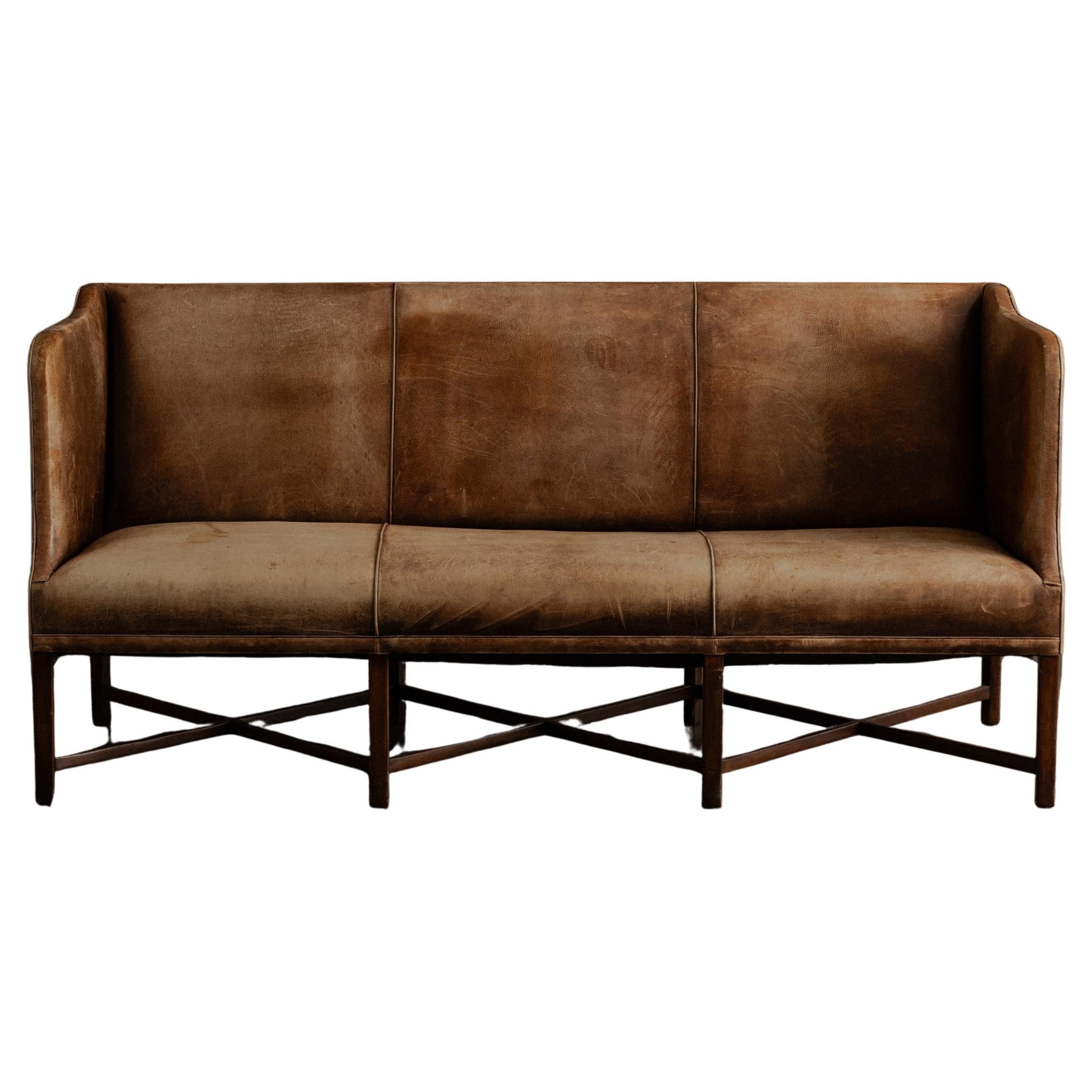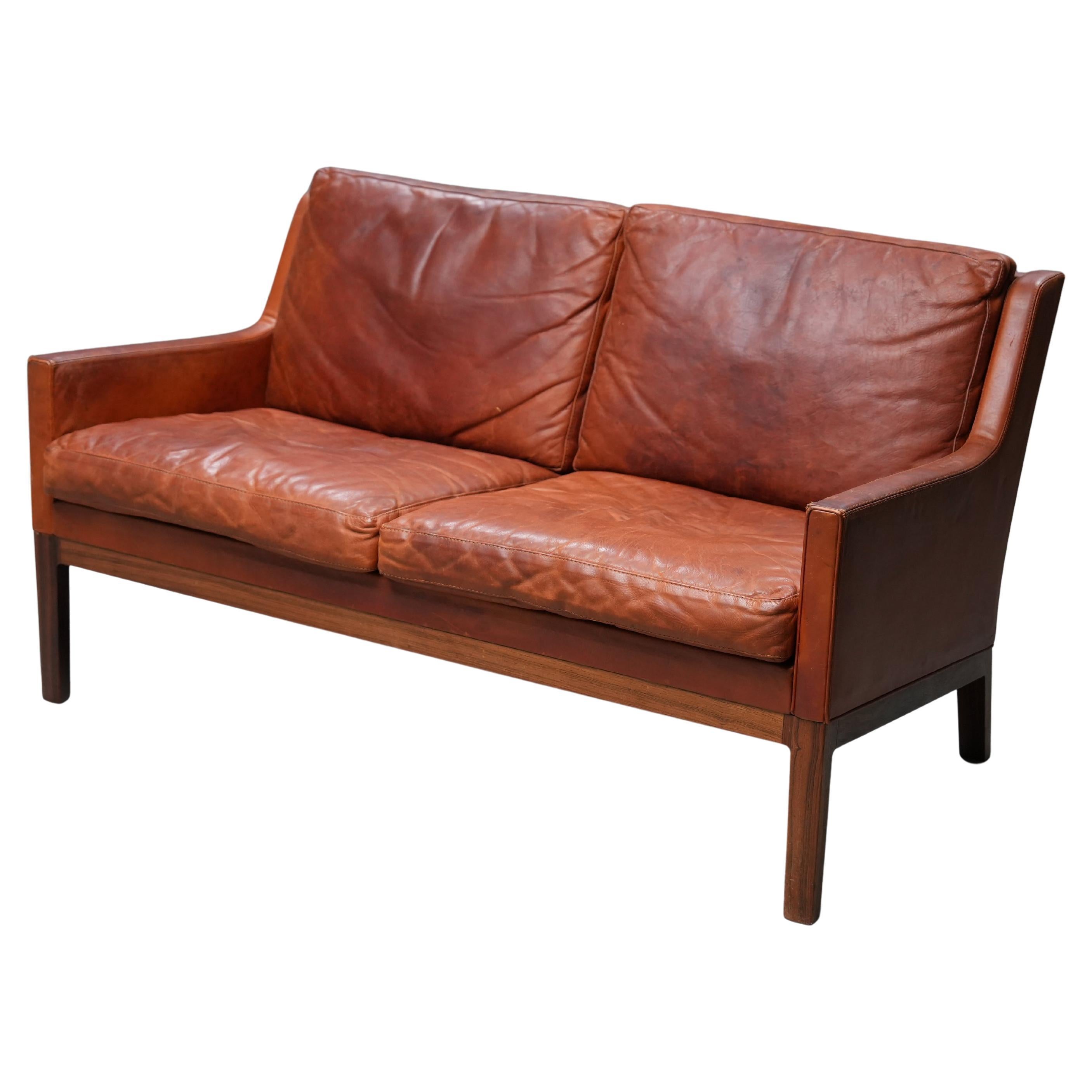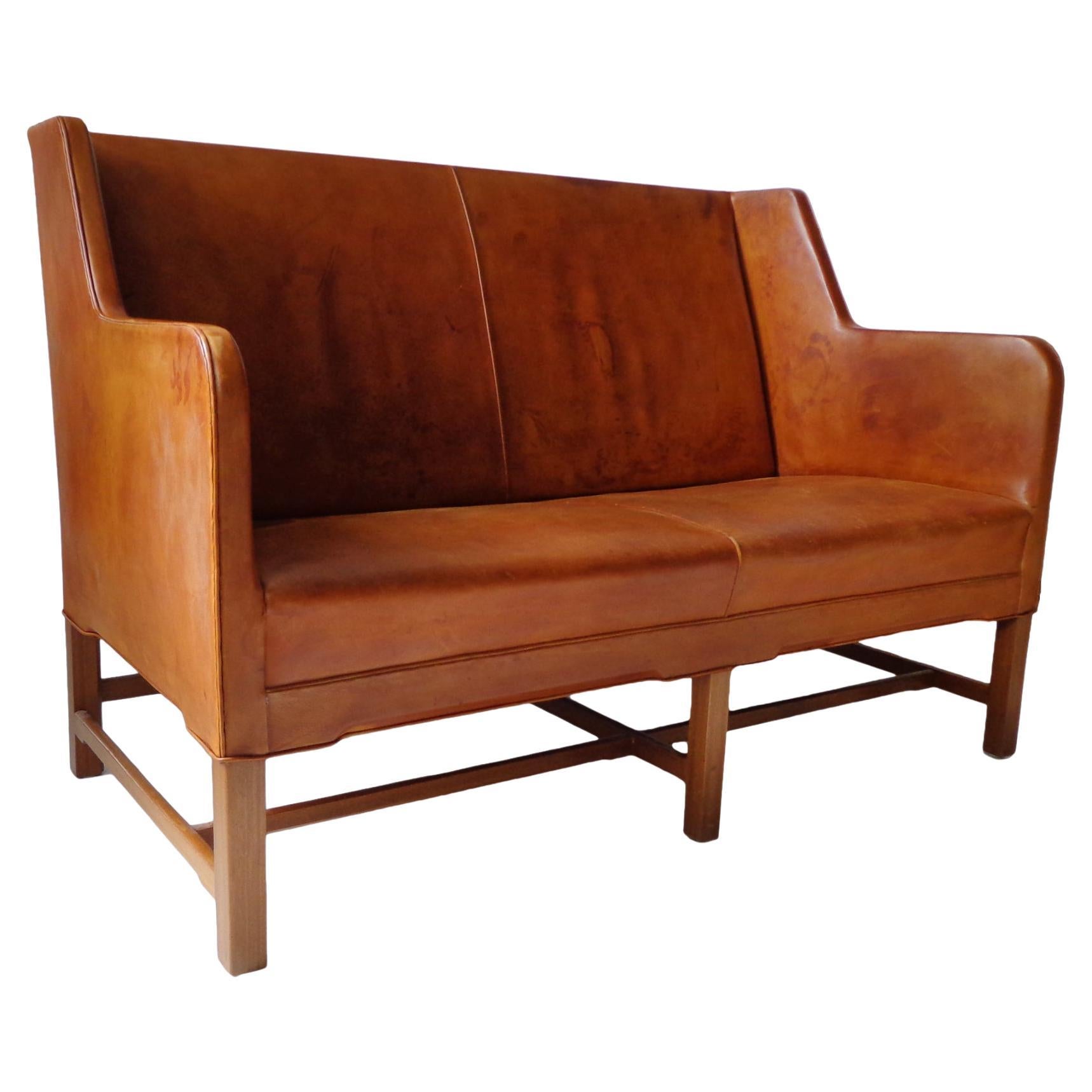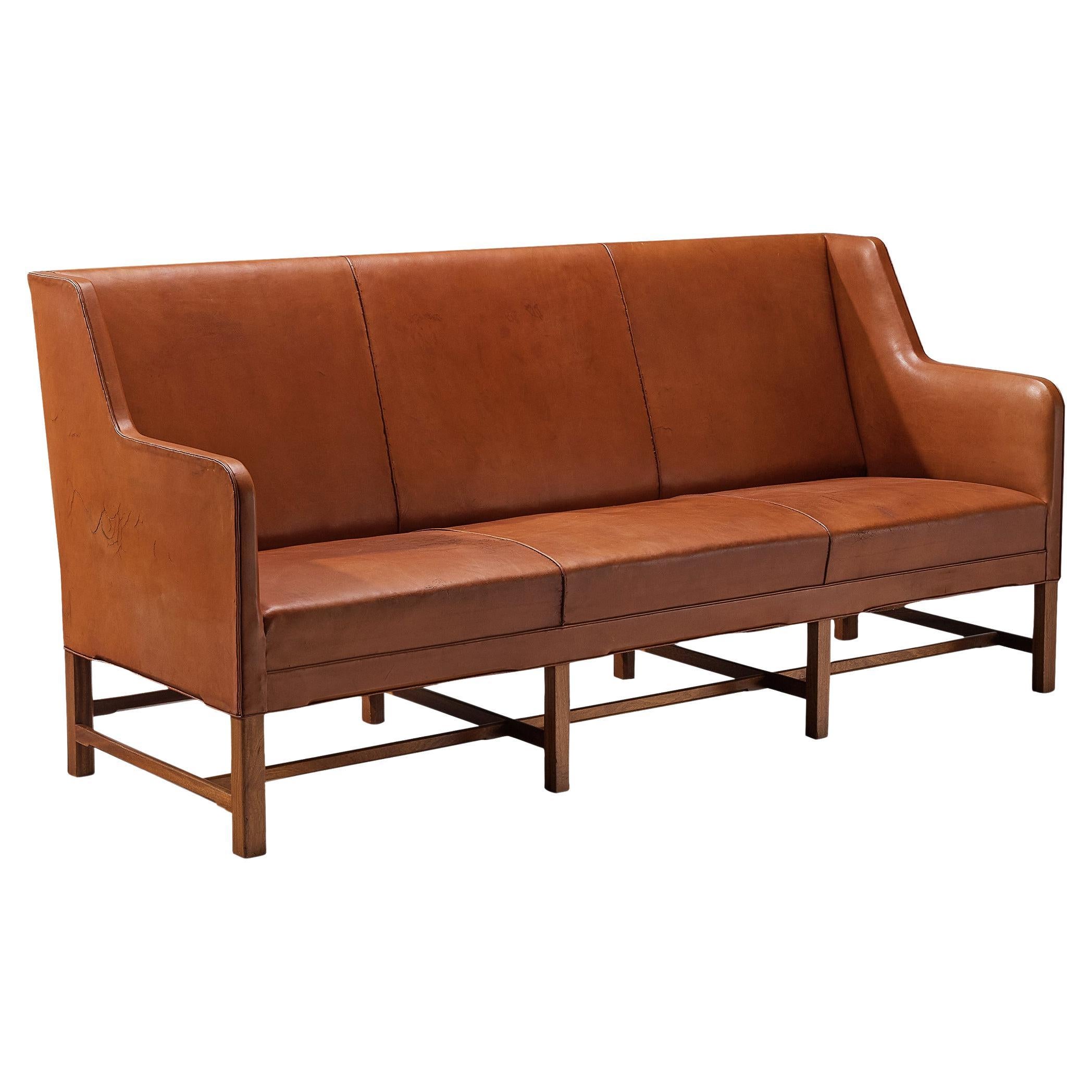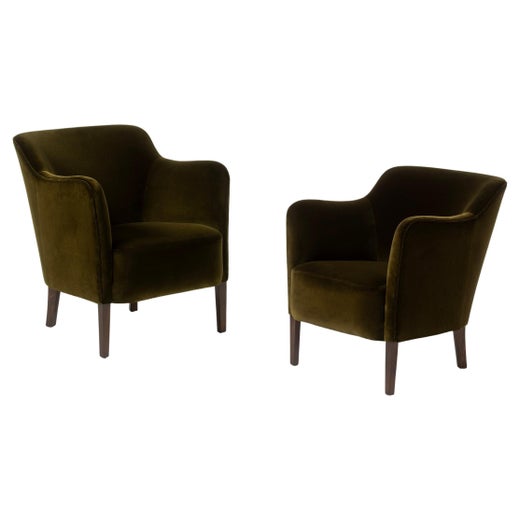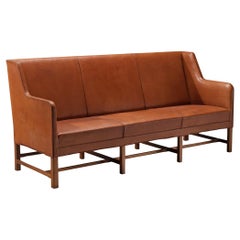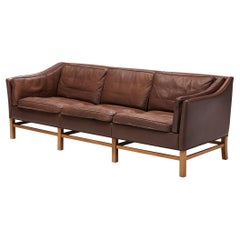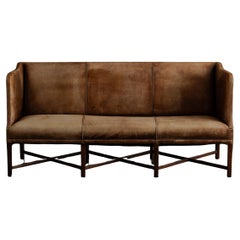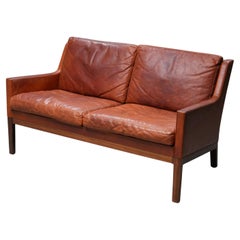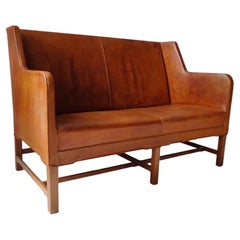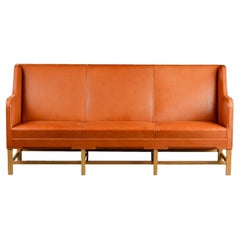Unique Jacob Kjaer Sofa in Original Niger Leather and Mahogany
About the Item
- Creator:Jacob Kjaer (Designer)
- Dimensions:Height: 33.08 in (84 cm)Width: 93.31 in (237 cm)Depth: 28.35 in (72 cm)Seat Height: 16.93 in (43 cm)
- Style:Scandinavian Modern (Of the Period)
- Materials and Techniques:
- Place of Origin:
- Period:
- Date of Manufacture:1930s
- Condition:Wear consistent with age and use. Every item Morentz offers is checked by our team of 30 craftspeople in our in-house workshop. Special restoration or reupholstery requests can be done. Check ‘About the item’ or ask our design specialists for detailed information on the condition.
- Seller Location:Waalwijk, NL
- Reference Number:Seller: 450140081stDibs: LU933137191032
Jacob Kjaer
After training under his cabinetmaker father and then further afield at Berlin’s Institute of Arts and Crafts Museum and in Paris, Danish furniture designer Jacob Kjær crafted classical English-inspired dining chairs, sofas and other pieces that, many decades later, are understated and elegant in any space.
Kjær returned to Copenhagen in 1926 and opened his own workshop after studying in Germany and working as a joiner in France. His collectible works have all the characteristics that are attributed to Scandinavian modernist furniture — his chairs boast gracefully sloping seat backs and arms that mirror works by designers such as Finn Juhl or Hans Wegner, while his tables and other pieces, typically crafted in teak, rosewood or mahogany, are demonstrative of the deep commitment to craftsmanship associated with likeminded artisans who hail from Nordic regions of the world.
A well-known armchair made by Kjær for use at the UN Building in New York City is the spare and sculptural FN chair. While this iconic seat was first constructed in wood and upholstered in durable leather at the designer’s studio, it was later manufactured by Christensen & Larsen and is now available from Kitani, a Japanese company that offers licensed reproductions of chairs by a range of Danish modernist designers such as Ib Kofod-Larsen, Nanna Ditzel and others.
Kjær participated in the Barcelona World Exhibition in 1929 and held leadership roles in the Arts and Crafts Committee for Export and the Danish Arts and Crafts National Association. He also chaired the Copenhagen Cabinetmakers’ Guild for a period during the 1950s. An example of one of Kjær’s armchairs is held in the Metropolitan Museum of Art.
On 1stDibs, find vintage Jacob Kjær seating, side tables, coffee tables and more.
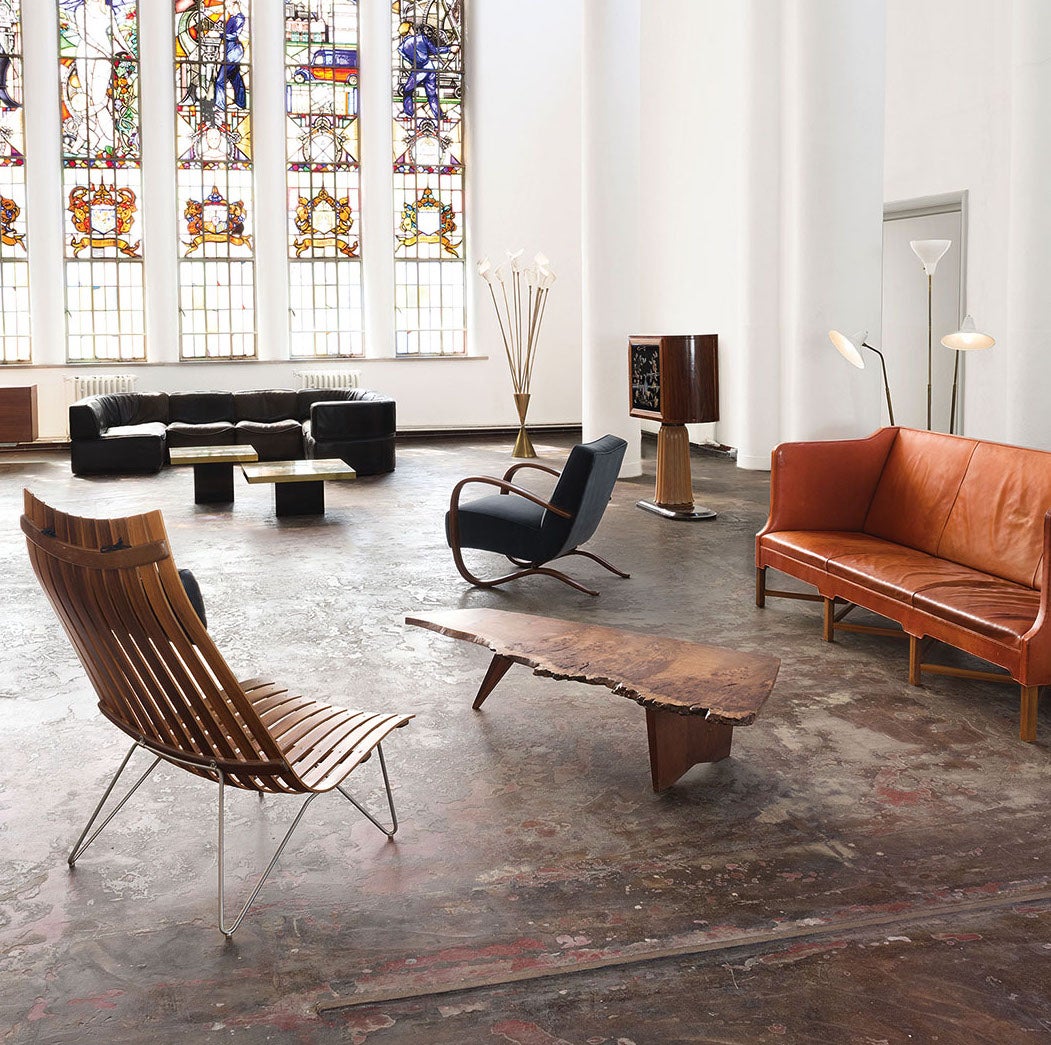
Established in 2006, Morentz has a team of approximately 55 restorers, upholsterers, interior advisers and art historians, making it a gallery, workshop and upholstery studio, all in one. Every day, a carefully selected array of 20th-century furniture arrives from all over the world at the firm’s warehouse, where the team thoroughly examines each piece to determine what, if any, work needs to be done. Whether that means new upholstery or a complete restoration, Morentz's aim is always to honor the designer’s intention while fulfilling the wishes of the client. The team is up to any challenge, from restoring a single piece to its original glory to furnishing a large-scale hotel project.
- ShippingRetrieving quote...Shipping from: Waalwijk, Netherlands
- Return Policy
More From This Seller
View AllVintage 1960s Danish Scandinavian Modern Sofas
Leather, Walnut
Vintage 1930s Danish Scandinavian Modern Sofas
Leather, Mahogany
Vintage 1930s Danish Scandinavian Modern Sofas
Leather, Mahogany
Vintage 1960s Danish Scandinavian Modern Sofas
Leather, Mahogany
Vintage 1960s Danish Scandinavian Modern Sofas
Leather, Wood
Vintage 1960s Danish Scandinavian Modern Sofas
Leather, Mahogany
You May Also Like
Vintage 1930s Danish Mid-Century Modern Sofas
Leather, Oak
Mid-20th Century Danish Scandinavian Modern Sofas
Teak, Leather
Vintage 1940s Danish Scandinavian Modern Sofas
Leather, Mahogany
Vintage 1970s Danish Scandinavian Modern Sofas
Leather, Ash
Mid-20th Century Danish Mid-Century Modern Sofas
Leather, Mahogany
Vintage 1960s Scandinavian Scandinavian Modern Sofas
Leather, Oak
Read More
A Basket-Weave Pattern Adds Country Charm to Paolo Buffa’s Elegant Cabinet
With its grid-like doors and wavy trim, the 1940s design feels as fresh as ever.
Hans Bergström’s Monumental Chandeliers Are Made for Grand Spaces
Designed by a giant of Swedish lighting, the large-scale fixtures bring major drama.
